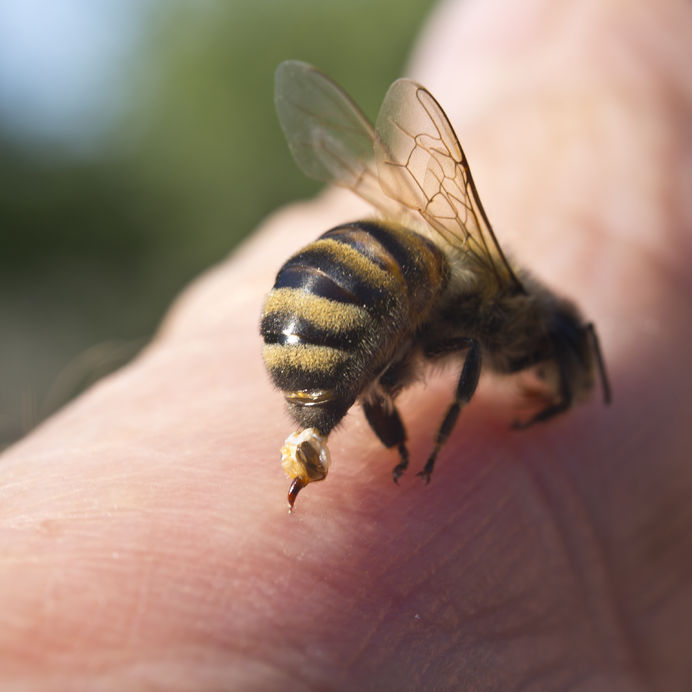Bee Safety Tips
April 26, 2018
You know we love bees, but this is the time of the year when they are most active and bee safety is of major concern. That means it is also the time of the year when people are most likely to be stung. The time bees have to “take care of business” is very limited and as we know, they are quite determined to get their work done.
Bees basically have from now until fall to pollinate and colonize. Depending upon where you live, you may come in contact with one of more than 1,000 species of bee. At times, bees may create a hive in a spot that is not exactly ideal, such as the side of your home or in a tree nearby where your children play. These tips are meant help both you and the bee survive the encounter.
Bee Safety Starts With…
Simply put, just leave them alone. Bees will not go on the attack unless they feel threatened. But, if you do unexpectedly come across a hive or swarm, here are some courses of action to take that will hopefully keep that stinger out of your skin.
When you unexpectedly come across some bees and have not disturbed them, remain as calm as possible and get out of the area as quietly and quickly as you can.
Bee Safety During an Attack
If you happen to come under attack, remain calm and follow these tips to keep the damage to a minimum:
- Run… Try to identify shelter and pick a straight line to get you there.
- If the bees begin attacking, your priority should be to protect your face, specifically your eyes, ears, mouth, and nose. If you have to, take off your shirt and cover yourself.
- DO NOT start waving your arms around and swatting at the bees. This will only amplify an already dangerous situation and further agitate the bees.
- Avoid jumping into water, as the bees will hover and wait for you to come up for air. The last thing you need or want is a swarm of bees attacking you as you are trying to catch your breath.
- Also avoid heavy brush. There will be small openings and the bees will find them. All this will do is end up trapping you for the bees to attack.
Bee Safety After an Attack
The best way to remove a stinger is to scrape it out, then wash the area with soapy water. After the area is cleaned out, use a cold compress to minimize swelling. If the person stung begins to feel nauseas or begins to have problems breathing, he or she may be having an allergic reaction to the bee sting. It is imperative to call 911 immediately and follow their direction.
Anyone stung more than a handful of times, even if they are not having an allergic reaction, should seek medical help. Go to the emergency room and tell them what happened, because there may be a delayed reaction to the venom (it can sometimes take hours for the venom to fully penetrate).
Copyright: daviden / 123RF Stock Photo


.jpg)




